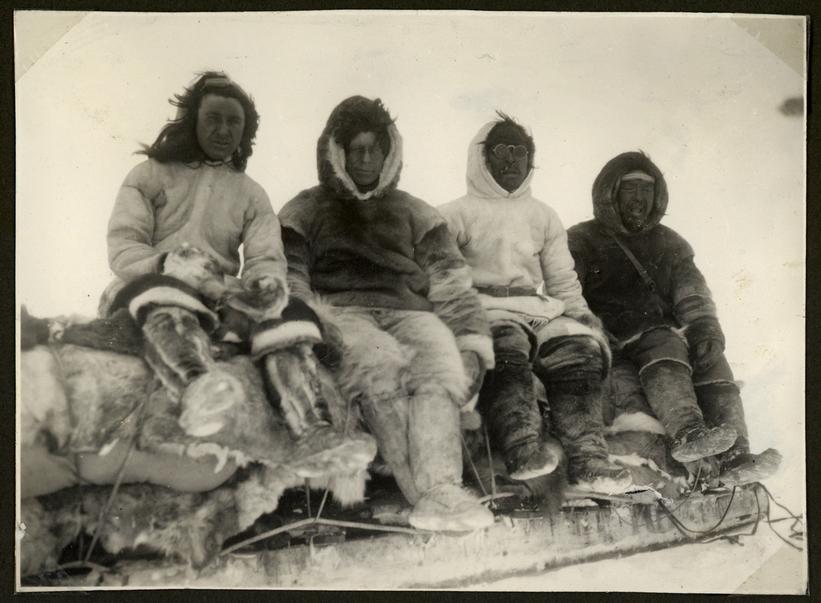About the project

Project specification
On the 18th of September 1921 the Fifth Thule Expedition led by the Danish scientist Knud Rasmussen arrived in Arctic Canada on the shores of the then called Danish Island, located at the very east end of the Hudson Strait. From here the members of the expedition would travel in and across Arctic North America with the aim to investigate and document all the different groups of Inuit living throughout Arctic Canada, Alaska and the easternmost part of Siberia. These encounters became the foundation of a unique Arctic collection, which the National Museum of Denmark now houses.As the 100 years mark of the expedition is coming up in 2021, an evident occasion has been given to revitalize, retell and reinterpret accounts and stories based on the extensive collection. It is the ambition of the National Museum to make the totality of our material collected during the Fifth Thule Expedition (1921-1924) digitally available. The framework of the full scale publishing of this material is called the Tumisiut project.
The Inuit heritage
Only the air spirits know what lies beyond the hills. Yet I urge my team farther on. Drive on and on, on and on! Knud Rasmussen writes in one of the several reports about the Fifth Thule Expedition; Across Arctic America. And onwards they drove, the members of the expedition – about 18.000 kilometres in total, traveling mainly by dog sledge. During the extensive journey the expedition gathered and recorded an invaluable collection of tools, traditional knowledge, photographs and ethnographic objects, which all hold a piece of the Inuit way of life in the Arctic North. The vast collection now housed in the National Museum of Denmark is therefore a key source to much of the local and cultural Inuit history. As such the digitalization and publication of the extensive material from the expedition hold an important meaning for the Inuit communities in which they were collected. Cultural heritage can be seen as a resource that contributes to the education about and revitalization of cultural traditions and knowledge; an important step in meeting political, social and economic challenges of the present.The Tumisiut project acknowledges that cultural heritage constitute an important resource for the involved societies, Inuit societies as well as Danish, and the project works to establish new digital platforms for the sharing of cultural heritage as well as the mutual transfer of knowledge which is equally valuable for the Inuit communities and the involved museums.
Digital hybrids and analogue objects
Digital access to cultural heritage obviously does not offer the same sensorial experience as one would get from handling objects physically. The digital hybrids are something in between material objects and digital signals. We will compare and explore sensorial experiences of both analogue objects and digital hybrids, as well as observe how people handle and reinterpret them as cultural heritage. This takes us on different kinds of fieldwork; both on digital platforms and out among the users of these platforms, in Canada and other Arctic areas.
International collaboration
It is the ambition that the Tumisiut-project will function as a catalyst for the development of a new Nordic network concerning Arctic and Sub-arctic collections. This collaboration will discover and develop new ways to approach questions about shared access to cultural heritage, as well as how the development and use of new digital platforms can function as an innovative infrastructure for shared knowledge between both intercultural and interdisciplinary partners. The Tumisiut project thereby opens up for the important discussion of how a national museum partakes in its international entanglements, and how this vital partition can spark new forms of insightful research opportunities through intercultural collaboration.

Communities and cultural rigths
The accessibility to cultural heritage is for any community an important resource in order to be able to preserve, develop and express cultural identity and history. The National Museum of Denmark acknowledges this approach when collaborating with Kitikmeot Heritage Society, and recognizes the collected ethnographic objects as a shared cultural heritage. The Tumisiut project gives rise to multiple discussions about this concept of shared cultural ownership and to another context of universalizing tendencies towards international accessibility. It even points towards a discussion of the purposes and roles of a museum in the world today. Through these discussions we hope to develop an even stronger foundation for the National Museum of Denmark’s future collaborations with source communities and for future digital strategies.
New ambitions in old footsteps
The aim of the project is
1) To gain basic experience for the sharing of cultural heritage, in an exchange with Nordic partner museums as well as the collaboration and dialogue with indigenous societies.
2) An engagement in the important discussion concerning the question of how a national museum can respond to a rising demand from both international communities (indigenous societies) asking for a shared access to cultural heritage, and at the same time a national expectation that calls for a more democratic and transparent museological approach including a higher degree of mediating and sharing of knowledge and archives.
3) The development of new digital platforms, which can work as a space for the sharing of cultural heritage, as well as a mutual transfer of knowledge between the collaborative partners.
